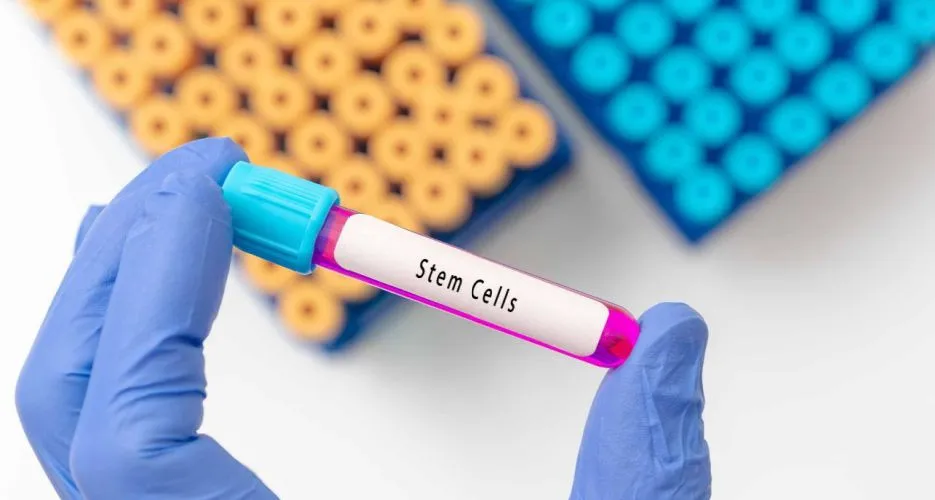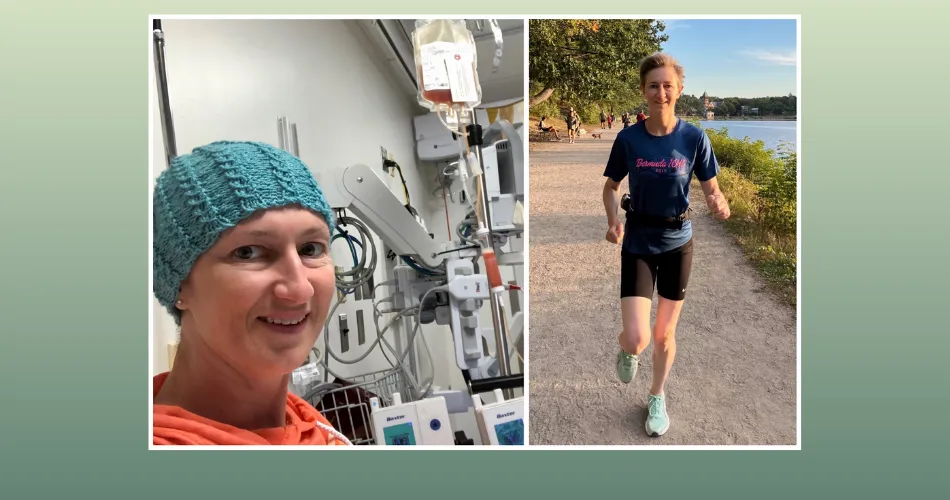Recent Drug Approvals for AML Part 1: FLT3 Inhibitors

Now is an exciting time in acute myeloid leukemia (AML) research. Before recently, treatment options were limited for AML patients, but this has changed in the last few years. Just in the last 2 years, there has been an explosion of clinical testing and FDA approval. New treatments are hitting the market and many new clinical trials are underway.
Amidst the excitement, all these new treatments can be difficult to navigate. A recently published paper gives us a breakdown of recent drug approvals for AML.
In 1973 the 7+3 treatment was proposed as the first viable treatment for AML. The 7+3 regimen is an abbreviation for 7 days of cytarabine and 3 days of anthracycline. The 2 chemo drugs cytarabine and anthracycline serve different functions in the therapy. Cytarabine slows down cancer growth and anthracycline drugs break down the DNA and cell membrane. Over the past 5 decades, there have been very limited treatments made available for AML. Since the 7+3 treatment was made available in 1973 there was little to no treatment advancement for over 40 years.
For the last 40 years, researchers have tried to find ways to improve the 7+3 regimen. They have tried everything such as increasing the dose of anthracycline, alternating the dose and duration of cytarabine, adding additional agents, giving more or fewer doses. Despite these attempts, no new advancements had been until the 2000s when Gemtuzumab Ozogamicin (GO) was approved. It was later retracted due to a lack of efficiency in later trials.
It wasn’t till 2017 that new drugs started hitting the market. In 2017 and 2018, a total of 8 new drugs were approved by the FDA. One of these drugs was Gemtuzumab Ozogamicin (GO) but it was administered with a different dosage and schedule. All these exciting new available drugs raise questions. Patients are asking, “Which drugs work best for me?” While doctors are asking, “How do we make these treatments safer and reach a broader population?”
In this series, we will look at different drug targets and different patient populations. In doing this, we will specifically address the benefits and consequences of these drugs. We will also talk about what is being done to advance these medications.
FLT3 mutated AML
The FLT3 mutation is found in approximately 30% of AML patients. It is considered the most common genetic alteration in AML. This mutation codes for the FLT3 protein which is a receptor protein in cells that encourages blood cells to grow. A mutation associated with the FLT3 gene often means that an excess amount of the receptor is found in the cell leading to oversized blast cells known as leukemia cells. In patients with the FLT3 mutation, large numbers of leukemia cells are found in the blood and bone marrow.
Because FLT3 mutations are extremely prevalent in AML patients, targeting this gene has been a high priority among AML researchers. The first attempts to target this protein receptor have shown mixed results in clinical trials but recent research shows that this is starting to change. Many of the first drugs were successful in reducing blast numbers but were not effective in inducing remission. Since the first tested FLT3 inhibitors started clinical trials, more specific inhibitors have been developed such as quizartinib and gilteritinib. These newer drugs are proving to be more effective.
FLT3 Inhibitors: Newly Diagnosed FLT3 Mutated AML
Midostaurin (Rydapt)
One of 2 currently FDA-approved FLT3 inhibitors is Midostaurin. It was one of the first FLT3 inhibitors studied in AML. Designed for patients with newly diagnosed FLT3 mutated AML, Midostaurin was initially found to reduce blast levels by 50% but no remission was achieved. It was then tested in combination with the 7+3 treatment. Although complete remission (CR) levels were not significantly higher the study showed longer overall survival (OS) and longer event-free survival. In addition to this, these benefits were not mutation specific meaning you can have any form of the FLT3 mutation and it works across the board.
Early phases show that the drug is well-tolerated but it should be noted that 9% of patients discontinuing the trials due to adverse reactions. Currently, a phase 3 trial is underway to better understand how the drug functions and to test its function and tolerability in patients without the FLT3 mutation and in older patients.
FLT3 Inhibitors: Relapsed and Refractory FLT3 Mutated AML
Gilteritinib (Xospata)
The other FLT3 inhibitor currently approved by the FDA is Gilteritinib. Clinical trials show promising results for Gilteritinib. Early phase clinical trials reflect a significantly better response in FLT3-mutated patients who were heavily pretreated or had refractory/relapsed AML (R/R AML). In a recently completed phase 3 trial, researchers recorded a significantly longer overall survival (OS) with an average of 9.3 months compared to the 5.6 months in the control group. This phase 3 trial also demonstrates a significantly greater complete remission (CR) rate of 35% compared to 15% in the control group.
Further studies are underway to evaluate the effectiveness of combination approaches and the use on younger patients.
FLT3 Inhibitor Resistance
In general, responding to FLT3 mutations has been successful but there are some downsides. Oftentimes these responses are short-lived and resistance to these therapies is an ongoing challenge. There is ongoing research that is aimed at working around FLT3 inhibitor resistance so that these therapies can be used to treat a broader range of patients.
Now is an exciting time in acute myeloid leukemia (AML) research. Before recently, treatment options were limited for AML patients, but this has changed in the last few years. Just in the last 2 years, there has been an explosion of clinical testing and FDA approval. New treatments are hitting the market and many new clinical trials are underway.
Amidst the excitement, all these new treatments can be difficult to navigate. A recently published paper gives us a breakdown of recent drug approvals for AML.
In 1973 the 7+3 treatment was proposed as the first viable treatment for AML. The 7+3 regimen is an abbreviation for 7 days of cytarabine and 3 days of anthracycline. The 2 chemo drugs cytarabine and anthracycline serve different functions in the therapy. Cytarabine slows down cancer growth and anthracycline drugs break down the DNA and cell membrane. Over the past 5 decades, there have been very limited treatments made available for AML. Since the 7+3 treatment was made available in 1973 there was little to no treatment advancement for over 40 years.
For the last 40 years, researchers have tried to find ways to improve the 7+3 regimen. They have tried everything such as increasing the dose of anthracycline, alternating the dose and duration of cytarabine, adding additional agents, giving more or fewer doses. Despite these attempts, no new advancements had been until the 2000s when Gemtuzumab Ozogamicin (GO) was approved. It was later retracted due to a lack of efficiency in later trials.
It wasn’t till 2017 that new drugs started hitting the market. In 2017 and 2018, a total of 8 new drugs were approved by the FDA. One of these drugs was Gemtuzumab Ozogamicin (GO) but it was administered with a different dosage and schedule. All these exciting new available drugs raise questions. Patients are asking, “Which drugs work best for me?” While doctors are asking, “How do we make these treatments safer and reach a broader population?”
In this series, we will look at different drug targets and different patient populations. In doing this, we will specifically address the benefits and consequences of these drugs. We will also talk about what is being done to advance these medications.
FLT3 mutated AML
The FLT3 mutation is found in approximately 30% of AML patients. It is considered the most common genetic alteration in AML. This mutation codes for the FLT3 protein which is a receptor protein in cells that encourages blood cells to grow. A mutation associated with the FLT3 gene often means that an excess amount of the receptor is found in the cell leading to oversized blast cells known as leukemia cells. In patients with the FLT3 mutation, large numbers of leukemia cells are found in the blood and bone marrow.
Because FLT3 mutations are extremely prevalent in AML patients, targeting this gene has been a high priority among AML researchers. The first attempts to target this protein receptor have shown mixed results in clinical trials but recent research shows that this is starting to change. Many of the first drugs were successful in reducing blast numbers but were not effective in inducing remission. Since the first tested FLT3 inhibitors started clinical trials, more specific inhibitors have been developed such as quizartinib and gilteritinib. These newer drugs are proving to be more effective.
FLT3 Inhibitors: Newly Diagnosed FLT3 Mutated AML
Midostaurin (Rydapt)
One of 2 currently FDA-approved FLT3 inhibitors is Midostaurin. It was one of the first FLT3 inhibitors studied in AML. Designed for patients with newly diagnosed FLT3 mutated AML, Midostaurin was initially found to reduce blast levels by 50% but no remission was achieved. It was then tested in combination with the 7+3 treatment. Although complete remission (CR) levels were not significantly higher the study showed longer overall survival (OS) and longer event-free survival. In addition to this, these benefits were not mutation specific meaning you can have any form of the FLT3 mutation and it works across the board.
Early phases show that the drug is well-tolerated but it should be noted that 9% of patients discontinuing the trials due to adverse reactions. Currently, a phase 3 trial is underway to better understand how the drug functions and to test its function and tolerability in patients without the FLT3 mutation and in older patients.
FLT3 Inhibitors: Relapsed and Refractory FLT3 Mutated AML
Gilteritinib (Xospata)
The other FLT3 inhibitor currently approved by the FDA is Gilteritinib. Clinical trials show promising results for Gilteritinib. Early phase clinical trials reflect a significantly better response in FLT3-mutated patients who were heavily pretreated or had refractory/relapsed AML (R/R AML). In a recently completed phase 3 trial, researchers recorded a significantly longer overall survival (OS) with an average of 9.3 months compared to the 5.6 months in the control group. This phase 3 trial also demonstrates a significantly greater complete remission (CR) rate of 35% compared to 15% in the control group.
Further studies are underway to evaluate the effectiveness of combination approaches and the use on younger patients.
FLT3 Inhibitor Resistance
In general, responding to FLT3 mutations has been successful but there are some downsides. Oftentimes these responses are short-lived and resistance to these therapies is an ongoing challenge. There is ongoing research that is aimed at working around FLT3 inhibitor resistance so that these therapies can be used to treat a broader range of patients.
More on Treatment Advances
Trending Articles

Get the Latest Acute Myeloid Leukemia Updates, Delivered to You.
By subscribing to the HealthTree newsletter, you'll receive the latest research, treatment updates, and expert insights to help you navigate your health.
Together we care.
Together we cure.
3x Faster.











